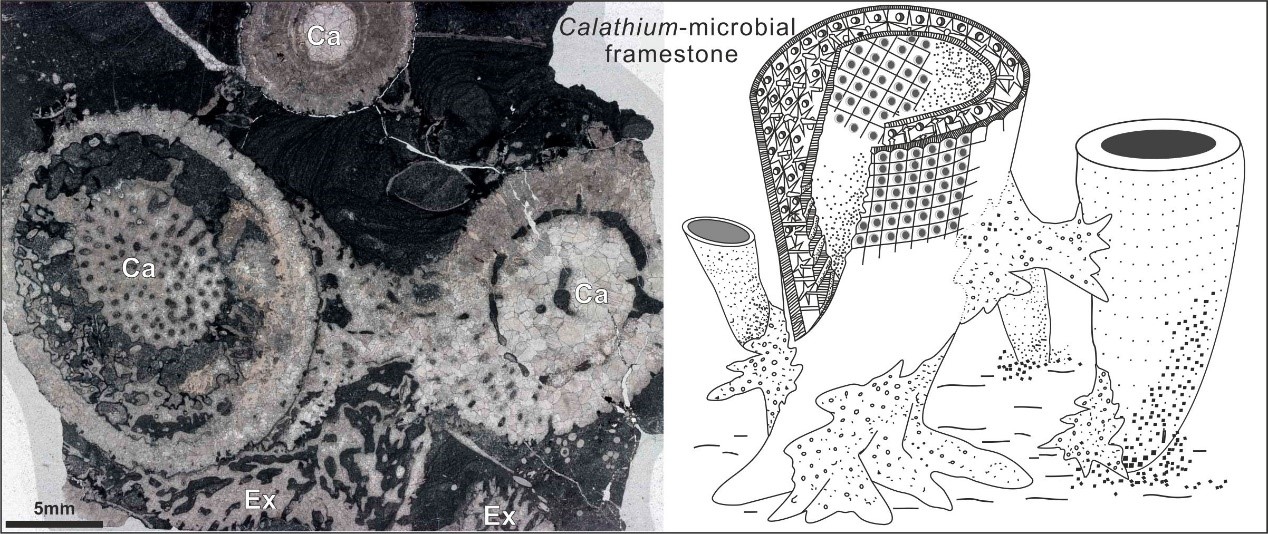
Calathium-microbial framestone (left: Thin section photomicrographs of the Calathium-microbial framestone; right: Reconstruction of the framestone)
As an obconical macrofossil with porous double-wall, Calathium was commonly present in reefs of Early to early Middle Ordovician age. The Calathium-bearing reefs thrived globally during the Early Ordovician, but this ecosystem collapsed in Middle Ordovician. A rare case of Calathium-microbial reefs was found from the middle part of the Yijianfang Formation (Darriwilian, late Middle Ordovician) of the Bachu area, located in the northwestern margin of the Tarim Basin, northwestern China. Previous investigations mainly focused on the description of the principal reef builders and facies differentiation. The framework structures of these reefs have not been investigated in detail.
Recently, Dr. LI Qijian from Nanjing Institute of Geology and Palaeontology, Chinese Academy of Sciences has provided the first description of the frameworks in typical Middle Ordovician Calathium-microbial reefs from the Tarim Basin. Three facies types are distinguished within the reef limestones: (1) Calathium-microbial framestone, (2) echinoderm-Calathium bafflestone, and (3) bryozoan-microbial bindstone. As a dominant type, the Calathium-microbial framestone shows a three-dimensional skeletal framework that is mainly constructed by Calathium and stabilized by microbialites. Although most specimens are toppled, Calathium displays well-developed lateral outgrowths, which connected individuals of the same species. Morphological characters of Calathium in thin sections show that calathids are hypercalcified sponges rather than receptaculitid algae.
Unlike the Early Ordovician lithistid sponge-Calathium reefs, the Tarim reefs studied contain very few lithistid sponges. Instead, bryozoans are fairly common and act as the most important non-microbial encrusters, attaching to the walls of Calathium. The Tarim Calathium-microbial reefs exhibit a striking similarity to the Calathium-echinoderms communities in the Late Ordovician reefs from Tennessee, which provides valuable insights into the evolution of Calathium-bearing reefs and into the nature of the reef ecosystems at this Early Paleozoic turning period, i.e. before the most dramatic change of biotic composition in the late Darriwilian.
This study was financially supported by the National Natural Science Foundation of China (41521061, 41290260, 41072002, and XDB10010503). The study entitled “Dissecting Calathium-microbial frameworks: The significance of calathids for the Middle Ordovician reefs in the Tarim Basin, northwestern China” has been published online in Palaeogeography, Palaeoclimatology, Palaeoecology, doi: http://dx.doi.org/10.1016/j.palaeo.2016.08.005.
Download:
